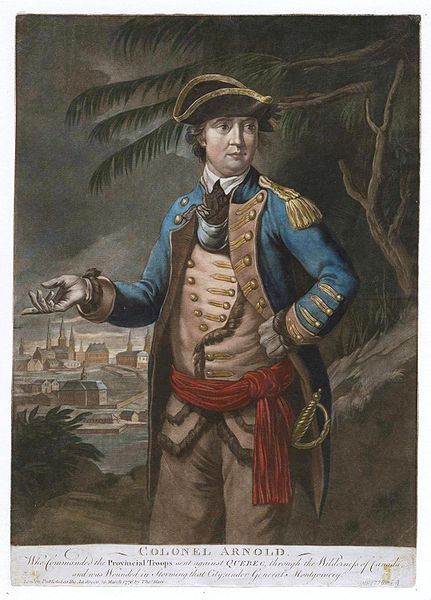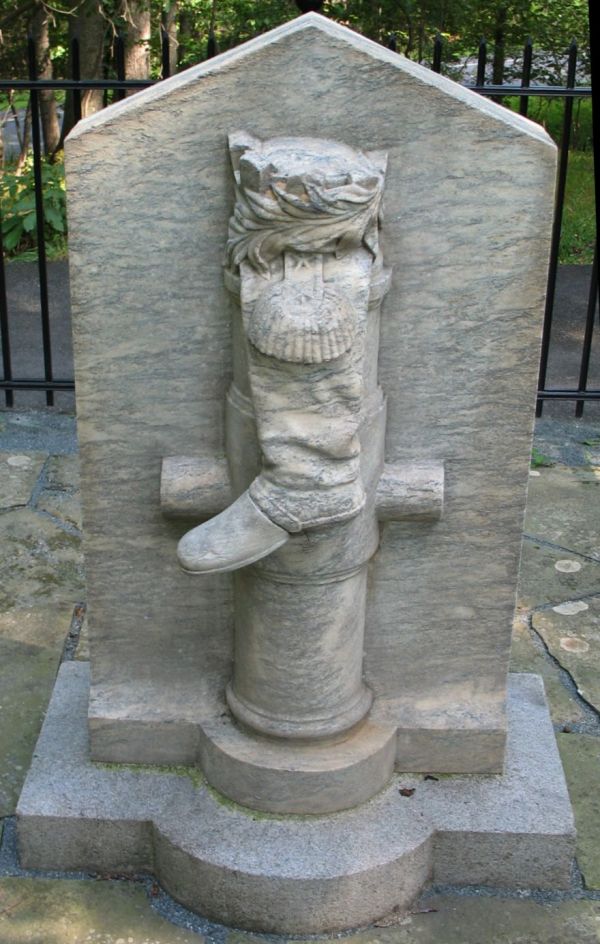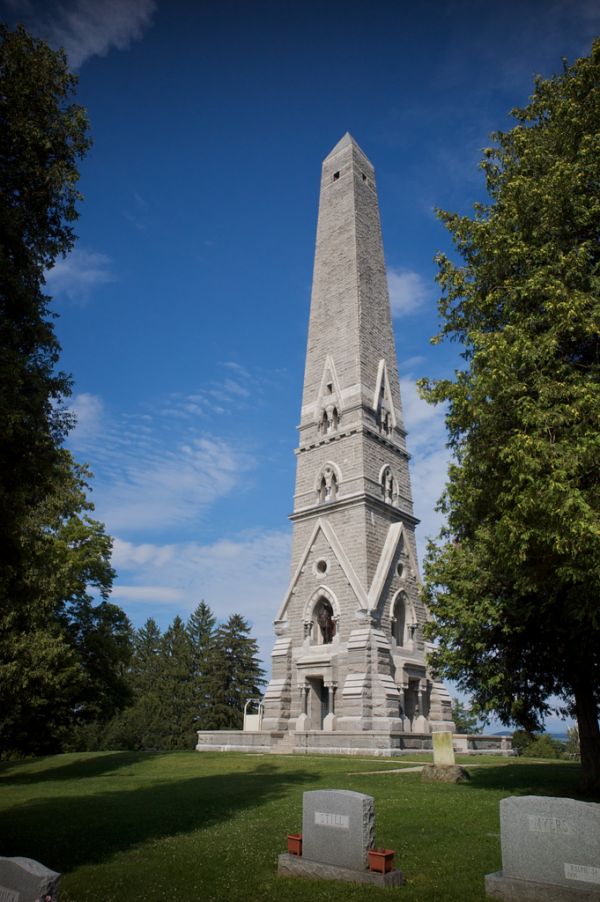Benedict Arnold
 In
the United States, the name of Benedict Arnold is synonymous with
treason. In exchange for cash and a commission in the British army,
Major General Arnold promised to betray his cause and hand over the
American fort at West Point. When American leaders discovered the plot,
Arnold fled.
In
the United States, the name of Benedict Arnold is synonymous with
treason. In exchange for cash and a commission in the British army,
Major General Arnold promised to betray his cause and hand over the
American fort at West Point. When American leaders discovered the plot,
Arnold fled.But it’s important to note that Arnold gained his command at West Point by dint of his previous battlefield service. Arnold was a brave, daring and aggressive commander. He had helped seize Fort Ticonderoga, participated in the invasion of Quebec and led American naval forces at the Battle of Valcour Island.
General Arnold’s greatest moment came during the Saratoga campaign, which ended with the surrender of an entire British army. The senior American commander, Horatio Gates, was often indecisive and shy of battle. Arnold, in contrast, was eager for battle. He personally led a successful charge on a British redoubt. During that fight, Arnold was shot in the leg and his horse fell on him.
Had Benedict Arnold died that day, he would likely be known as one of the great heroes of the American Revolutionary War. There would be towns, counties and schools named for him.
But he didn’t die. Arnold lived on to betray his country.
Which brings us to the Saratoga battlefield and the scene of Arnold’s most heroic moment.
Part of the Saratoga battlefield area is a national park. On the grounds are assorted monuments to various leaders and events. These were, of course, all built well after Arnold’s betrayal. How does it address the critical and heroic role of America’s most infamous traitor in that battle?
Like this:

In memory of the most brilliant soldier of the Continental army, who was desperately wounded on this spot, winning for his countrymen the decisive battle of the American Revolution, and for himself the rank of Major General.John Watts de Peyster, a general in the New York State Militia during the Civil War, erected the monument in 1887. Perhaps de Peyster made it in response to the primary monument, which was erected a few years earlier. The 155-foot tall obelisk has niches for four statues. There are statues for three of the four great American leaders of the battle: General Horatio Gates, General Philip Schuyler and Colonel Daniel Morgan. The fourth niche is empty.


No comments:
Post a Comment